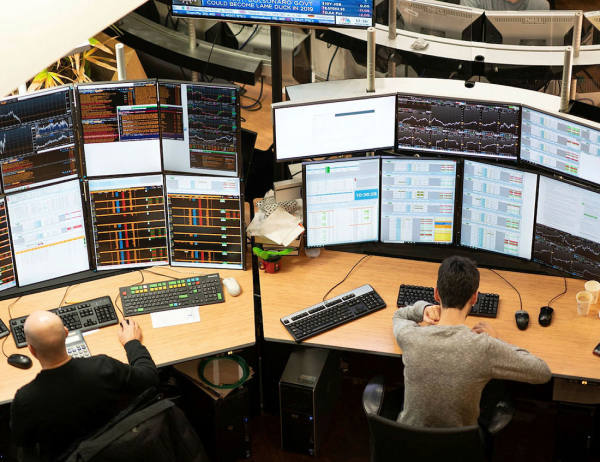- 2022 monsters come unstuck.
- Is the screen ill-suited to current markets?
Beneath the jargon, the academic literature on momentum investing can sometimes seem bafflingly simple.
In one 2002 study, researchers concluded that stocks exhibiting past positive autocorrelation can be a source of momentum. Put simply, this means you can have some confidence that today’s price jump in a strong momentum stock will mean another price jump tomorrow.
If that sounds either basic or intuitive, it might help to know that similar patterns occur naturally. For example, if it’s currently raining, the meteorological record suggests we should assign a higher probability of it raining again tomorrow than if it the sun were out. This doesn’t mean that the next time it rains you should expect it to rain forever; rather, it’s the observation that weather events – like price shifts – can take place over time periods longer than one day.
Then again, momentum doesn’t require a time series. That same 2002 study also found that higher expected returns can act as their own source of momentum. In short, investors (or more accurately, speculators) can make money by buying into hype. Although we probably shouldn’t read too much into cryptocurrency markets – given their nascency, the lack of genuine price discovery, and the fact that many are rigged – momentum is a key factor in price returns.
However, this still doesn’t mean there is a unified theory of momentum investing, or that the literature is particularly useful in telling investors how to use it to their advantage.
For a start, the history of academic finance is replete with smart observations that are immediately assimilated into trading strategies. As such, if there’s a momentum-based pattern out there, you can be reasonably confident that some maths PhD or algorithmic trader has already cottoned onto it.
Second, just as bad weather hangs around until it changes, momentum works until it doesn’t. While the existence of momentum shows that markets can be both irrational and inefficient, it is a fragile strategy. Knowing when to sell out of a momentum trend is rarely, if ever, clear, and lacks the comparative surety provided by investing in strong company fundamentals.
Our Monsters of Momentum stock screen, one of the longest-running in our stable, has worked well for most of its 13-year life. During this time, its annual refreshes have generated an average total return of 12.1 per cent per year, more than double the 5.8 per cent average from the FTSE All-Share.
However, for the second year in a row, it has lagged its benchmark. While a majority of last year’s batch of 16 stocks were in positive territory over 12 months, a handful of duds meant that any momentum seen in the stocks in the months leading to November 2022 has either dissipated or gone into reverse. Most noteworthy has been the crash in the shares of oil and gas group Energean (ENOG), which has been hit by rising geopolitical risks in Israel and the Eastern Mediterranean.
| Name | TIDM | 7 Nov 2022 - 26 Oct 2023 |
| Bank Of Georgia | BGEO | 41.1 |
| Tbc Bank | TBCG | 28.8 |
| Pendragon | PDG | 17.2 |
| Network International | NETW | 15.2 |
| Shell | SHEL | 11.7 |
| BP | BP. | 9.8 |
| Flutter Entertainment | FLTR | 6.3 |
| Micro Focus | MCRO | 1.8 |
| Pearson | PSON | 0.7 |
| Biffa | BIFF | -1.0 |
| Glencore | GLEN | -9.0 |
| Imperial Brands | IMB | -11.9 |
| Ruffer Investment Co | RICA | -15.5 |
| Beazley | BEZ | -18.2 |
| Plus500 | PLUS | -18.7 |
| Energean | ENOG | -44.1 |
| FTSE All-Share | - | 2.9 |
| Monsters of Momentum | - | 0.9 |
The overall outcome was a 0.9 per cent total return from the Monsters, two percentage points adrift of the market. As a result, the all-time return from the screen has inched up to 323 per cent, more than triple the 101 per cent from the FTSE All-Share. That’s the headline figure at least: while the screens in these pages are meant as a source of ideas rather than readymade portfolios, if we add a 1.5 per cent annual charge to represent notional trading costs, the total return drops to 247 per cent.

I have a theory why the screen isn’t working quite as well as it once was. As we noted last year, the Monsters of Momentum’s underwhelming performance since 2021 has occurred despite a good run for our Momentum Classics screen, which is refreshed quarterly. As the academic literature has also noted, differences in time periods matter a great deal.
Like politics, a year is a long time in markets. While a 12-month period can better capture a sustained economic growth cycle – such as the one experienced by last year’s best-performing selections, the Georgian banks TBC (TBCG) and Bank of Georgia (BGEO) – it also widens the window in which a market shock can disrupt buying momentum.
However, this doesn’t explain why the screen was able to do so well in the decade until 2021, during which time it only made an absolute loss or lagged the market in two years (2016-17 and 2018-19). To say that period was without disruption would be a complete misreading of the UK market.
What has occurred in the past two years is a wholesale re-set in investor expectations. As well as the fastest rate-hiking cycle in modern history, investors have had to grapple with serious volatility at the level of individual stocks, short-term profit-taking, and a lot of market pessimism. These conditions can make it challenging for a one-year momentum strategy to work over four quarters.
Whether a possible peak in interest rates will help put the screen back on track is impossible to say ahead of time. As ever, we'll have a much clearer sense of the price action after we revisit this year's cohort in 12 months' time.
Methodology
The screen itself is straightforward: it simply wants to see as much momentum as possible, which means testing for momentum in price, moving-averages, earnings and volume. The full criteria are as follows:
■ Price momentum: a share price rise in the top 10 per cent of shares screened over the past three months, in the top 25 per cent over six months, and in the top 50 per cent over a year.
■ Trend: the 10-day moving average must be above the 30-day, which in turn must be above the 100-day.
■ Earnings growth: average forecast earnings growth for each of the next two financial years must be among the top quarter of all stocks screened.
■ Volume: average daily volumes over the past three months must be above the level from a year ago.
In a familiar pattern, just one company – oil services firm Hunting (HTG) – passed every test. We’ve therefore allowed other stocks through the screen based on the same weakened criteria we used in the past three outings, which requires stocks to pass the key price momentum test, but only two of the other three tests. This throws up a further eight names, including four investment trusts and two companies that have recently appeared in our ideas section: waste-to-product outfit Renewi (RWI) and fizzy drinks peddler AG Barr (BAG).
For more details on the stocks in this year’s cohort – including a more detailed summary of their fundamentals in a downloadable spreadsheet – see below.
| Test failed | Name | TIDM | Mkt Cap | Net Cash / Debt(-)* | Price | Fwd PE (+12mths) | Fwd DY (+12mths) | FCF yld (+12mths) | Op Cash/ Ebitda | ROCE | Fwd EPS grth NTM | 3-mth Mom | 3-mth Fwd EPS change% |
| - | Hunting | HTG | £510mn | -£82mn | 309p | 11 | 2.9% | 6.5% | - | 0.9% | 74% | 18.4% | 22.4% |
| Top Q EPS gr forecast | AG BARR | BAG | £571mn | £43mn | 510p | 15 | 3.0% | 5.4% | 81% | 16.8% | 10% | 4.9% | 7.8% |
| Top Q EPS gr forecast | Restaurant Group | RTN | £509mn | -£586mn | 67p | 24 | - | 6.8% | 28% | 6.9% | 28% | 68.8% | 21.2% |
| Top Q EPS gr forecast | Pantheon International | PIN | £1,519mn | £34mn | 288p | - | - | - | - | 1.6% | - | 9.5% | - |
| Top Q EPS gr forecast | Majedie Investments | MAJE | £113mn | £2mn | 213p | - | - | - | - | -17.8% | - | 8.1% | - |
| Top Q EPS gr forecast | Renewi | RWI | £529mn | -£586mn | 659p | 8 | 1.6% | 4.8% | 53% | 19.2% | 8% | 31.3% | 7.1% |
| Top Q EPS gr forecast | CVC Income & Growth | CVCG | £136mn | £1mn | 107p | - | - | - | - | -7.2% | - | 8.9% | - |
| Top Q EPS gr forecast | Riverstone Energy | RSE | £265mn | £10mn | 628p | - | - | - | - | - | - | 15.4% | - |
| Top Q EPS gr forecast | XPS Pensions | XPS | £436mn | -£64mn | 210p | 14 | 4.6% | 6.0% | 89% | 11.4% | 11% | 7.7% | 8.1% |
| Source: FactSet. As of 26 Oct 2023. * FX converted to £ | |||||||||||||




.jpg?source=invchron&width=600)




